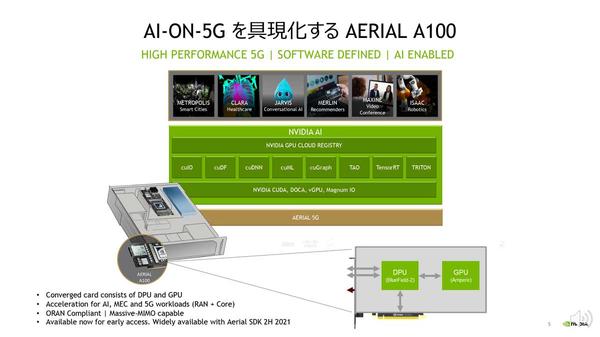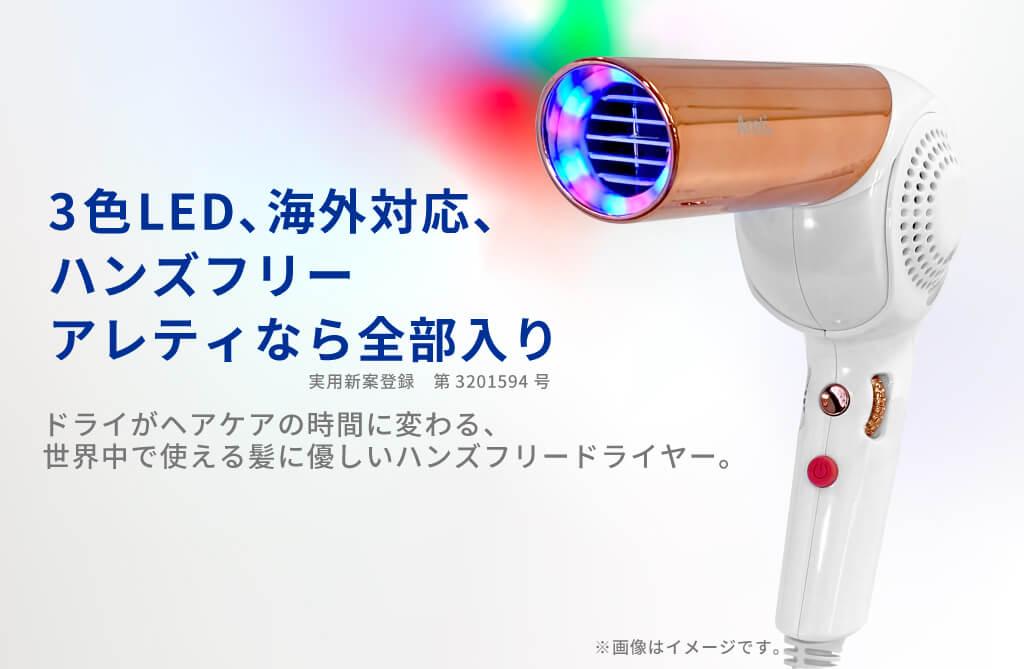"Future of 5G RAN" by Nbidia DOCOMO and Fujitsu's "5G RAN Future" | Business Network.jp
"Aerial A100" scheduled for release in the second half of 2021 (click to enlarge)
This will change the way RAN and MEC facilities are built. Until now, it was necessary to combine multiple dedicated servers to configure the RAN and MEC functions, but "it can be easily realized with a general-purpose server and a single card," he said. While minimizing the installation space, power consumption, and operation effort, he emphasized the advantages of "higher processing performance and expandability than ever before." The number of “AI-on-5G partners” that develop 5G RAN, 5G core, security functions, etc. using NVIDIA products such as Aerial A100 is also increasing. As shown in the image below, Ericsson, Fujitsu, Mavenir, etc. are developing solutions for 5G RAN and 5G core areas, while Red Hat, VMware, Google, Palo Alto Networks, etc. are developing solutions for 5G virtualization/cloudization and security areas.
Partners to jointly develop solutions that embody AI-on-5G
Advanced RAN with “NVIDIA + Arm” Mr. Noda also introduced that he is working with partners on various initiatives to advance 5G RAN. One of them is the joint development of the “RAN + MEC Platform” with Arm, which announced its acquisition in September 2020. NVIDIA and Arm are currently running a PoC to use NVIDIA GPUs and Arm CPUs together to realize Cloud RAN. Cloud RAN operates cloud-native RAN functions on general-purpose compute platforms in place of traditional dedicated hardware. The functions of the CU (Centralized Unit: aggregation base station) and DU (Distributed Unit: decentralized station) that make up the RAN are deployed in the edge data center, and the RU (Radio Unit: antenna section) is accommodated there for efficient operation. The aim is to operate RAN” (Mr. Noda). In order to run this Cloud RAN on a general-purpose server, the challenge is how to perform high-speed arithmetic processing. "There is a lot of layer 1/2 processing, and in addition to increasing the CPU performance of general-purpose servers, a hybrid approach that incorporates dedicated processors to perform layer 1 and beamforming processing is required."

Image of platform using Arm CPU and NVIDIA GPU together
In response to this issue, NVIDIA provides a mechanism that offloads the enormous parallel processing that occurs in layer 1 processing to the GPU, using the Arm CPU as the main axis. In addition, we are working with Arm and other 5G ecosystem partners to realize a "RAN + MEC Platform" that runs MEC applications such as AI video analysis on the same general-purpose hardware.
 notebook-laptop
notebook-laptop







